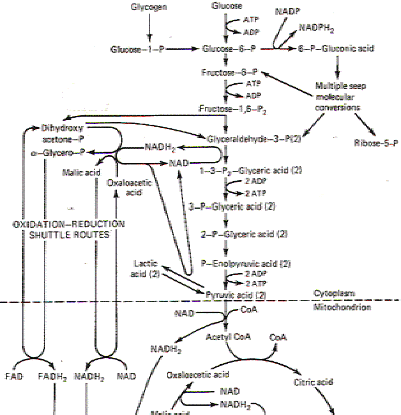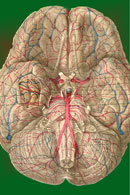|
|
|
 |
|
|
Fig-1
In the healthy normal functioning brain, glucose is the only substrate utilized for energy metabolism. Thus hypoglycemia presents the brain with a very serious problem. While most other tissues can shift to utilizing free fatty acids (FFA) as an alternative energy source when glucose is lacking, the brain cannot because they are excluded by the blood-brain barrier. While there is some evidence that the brain can utilize β-hydroxybutyric acid for energy metabolism when glucose levels are low or when fats are being mobilized for energy metabolism throughout the rest of the body, the brain could never supply its high energy demands by this method alone in the absence of glucose. Thus the brain is dependent on an uninterrupted supply of blood-borne glucose to energize its cells. Decreases in blood glucose bring on disturbances in cerebral function. Depending on the level of hypoglycemia, these changes range from mild sensory disturbances to coma. At blood glucose levels of 19 mg per 100 mL or below (normal is 60 to 120 mg per 100 mL), a mentally confused state occurs. Brain O2 utilization falls to 2.6 mL per 100 g per minute (normal, 3.5 mL per 100 g per minute) and glucose utilization drops as well. Coma commences when glucose levels fall to 8 mg per 100 mL. Epinephrine can be effective in reversing the effects of hypoglycemia by promoting liver glycogenolysis. However, attempts to solve the problem by substituting other carbohydrate metabolic substrates have been largely unsuccessful, with the single exception of mannose. This is the only monosaccharide other than glucose which the brain appears to utilize directly. It crosses the blood-brain barrier and directly replaces glucose in the glycolytic pathway. However, its normal level in the blood is too low to be of any real help in reversing the cerebral effects of hypoglycemia. Unless reversed quickly, comatose levels of prolonged hypoglycemia will bring on necrosis of cerebrocortical cells and (to a lesser extent) other brain regions as well. |
|
|
Copyright [2007] [CNS Clinic-Jordan]. All rights reserved



